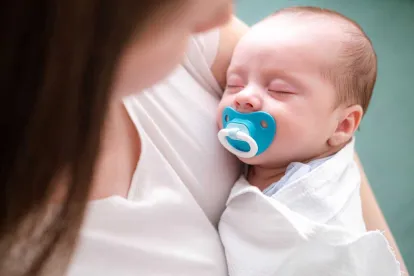Today we are taking a break from posting about personal injury litigation, and instead looking at efforts to prevent injuries in our most vulnerable population, babies. Baby safety has always been an interest of mine since working as a maternal newborn nurse, and one of my attorney colleagues recently became a first-time grandfather. Fall brings annual attention across organizations focusing on baby sleep safety. September is Baby Safety Month, sponsored annually by the Juvenile Products Manufacturers Association,1 and October is Sudden Infant Death Syndrome (SIDS) Awareness month – as declared 20 years ago by the Eunice Kennedy Shriver National Institute of Child Health and Human Development (one of the National Institutes of Health in the US Department of Health and Human Services).2
Approximately 3400 to 3500 infants die each year unexpectedly.3 Many have heard of SIDS, the sudden death of an appearing healthy baby during sleep but have not heard the broader term of Sudden Unexpected Infant Death (SUID) which encompasses all unexplained and sudden infant deaths during sleep up to one year of age.
Three factors play a role in the occurrence of sleep-related deaths. First, biological factors impact the normal processes of an infant’s growth and development such as brain stem abnormality, low birth weight, or a respiratory infection. Second, a triggering event or extrinsic risk factor such as placing an infant on his stomach or side to sleep occurs. Third, the event occurs during a critical phase of development: less than one year of age.
During sleep, the infant’s heart rate, blood pressure, respiratory rate, and muscle tone are reduced. If an inclined sleep surface is greater than 10 degrees, infant abdominal muscles associated with turning are used. If an infant happens to roll from his back to his stomach at this elevated degree, it requires a coordination of muscles to turn. Since the infant’s abdominal muscles are weaker, it requires more work to turn from the stomach to the back, and they can become fatigued. Additionally, greater neck and torso adjustments may be required in these inclined products. These factors can cause suffocation of the infant if they are unable to turn over.
Sleeping position is considered a strong modifiable risk factor for sleep-related disease. A firm flat sleep surface elevated less than 10 degrees is recommended for infants less than 5 months. Risk of suffocation is increased with stuffed animals, infant positioners, pillows and loose blankets, and should not be placed in the crib.
Sleeping position is considered a strong modifiable risk factor for sleep-related disease.
The CPSC’s latest Federal Infant Sleep Products Safety Standard went into effect in June and applies to products manufactured on or after June 23, 2022.4 The rule effectively eliminates potentially hazardous sleep products in the marketplace, such as inclined sleepers, travel and compact bassinets, and in-bed sleepers that do not currently meet a CPSC mandatory safety standard for infant sleep.
Parents are often concerned about a greater incidence of reflux when a baby is placed on his back to sleep; however, this has not been supported by studies involving infants less than 6 months old. Parents should be educated about that fact. Infants in car seats, strollers, swings, infant carriers or slings that fall asleep should be moved to a firm flat surface with less than a 10-degree incline to sleep.
The American Academy of Pediatrics task force published updated recommendations in 2016 for reduction of SIDS and sleep-related infant deaths. These recommendations were revised in 2022 and expanded on the 2016 guidelines regarding information about sleep surface, breastfeeding, soft bedding, pacifier use, prenatal and post-natal substance abuse, overheating and head covering, use of home cardiorespiratory monitors, tummy time, and swaddling. The guidelines also emphasized the need for research and surveillance, for endorsement of the safe infant sleep practices for infants by health care workers, and for manufacturers to embrace safe infant sleep guidelines.
In a June 23, 2022, news release, the CPSC advised that it plans a “comprehensive outreach effort to manufacturers, importers, and sellers to enforce the new rule, including educating them about the requirements, and making sure they are aware of their compliance obligations.” The CPSC explained that it will utilize direct communication, online resources, and other activities in its outreach effort. We will monitor these efforts and any other developments related to this rule and publish an alert when warranted.
FOOTNOTES
1https://www.jpma.org/page/baby_safety_month#
2https://www.nichd.nih.gov/newsroom/resources/spotlight/102014-october-SIDS
3https://publications.aap.org/pediatrics/article/150/1/e2022057990/188304/Sleep-Related-Infant-Deaths-Updated-2022; and https://www.cdc.gov/sids/about/index.htm



 />i
/>i
